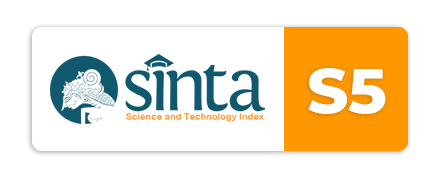EVALUASI MASTER PLAN TERMINAL PETIKEMAS SEMARANG DITINJAU DARI ALUR PELAYARAN
DOI:
https://doi.org/10.33556/jstm.v19i2.201Abstract
The master plan evaluation of Semarang Container Terminal was carried out in anticipation of current container flow. It is also used to analyze the Container Terminal master plan to be able to meet the needs up to the year of 2030. The evaluation was conducted by collecting secondary data related to shipping lanes, vessel flows and container flows. Regression method was used to analyze container flows and vessel flows. The results of the analysis were used to determine the Container Terminal master plan development plan up to the year of 2030. The results of the evaluation showed that the existing conditions of the depth and width of the shipping channel also in the port pond have exceeded the existing conditions. The shipping lanes and port pond must be deepened to 13 m and 12 m and the widening of the shipping lane is up to 146 m.
Keywords: Container terminal, master plan, shipping Lanes
Evaluasi master plan Terminal Petikemas Semarang (TPKS) dilakukan dalam mengantisipasi arus petikemas saat ini. Analisis terhadap master plan TPKS juga dilakukan untuk bisa memenuhi kebutuhan hingga tahun 2030. Penelitian dilakukan dengan mengumpulkan data sekunder yang berkaitan dengan alur pelayaran, arus kapal serta arus petikemas. Metode regresi dilakukan untuk memprediksi arus petikemas dan arus kapal yang hasilnya digunakan untuk menentukan rencana pengembangan master plan TPKS hingga tahun 2030.Hasil penelitian menunjukkan bahwa kondisi existing pada kebutuhan dalam dan lebar alur pelayaran, serta dalam kolam pelabuhan sudah melebihi kondisi existing. Kedalaman alur pelayaran dan kolam pelabuhan harus diperdalam hingga 13 m dan 12 m. Pelebaran alur pelayaran dilakukan hingga 146 m.
Kata kunci : Master plan TPKS dan alur pelayaran
Downloads
Published
Issue
Section
License
Authors who publish with this journal agree to the following terms:Authors retain copyright and grant the journal right of first publication with the work simultaneously licensed under a Creative Commons Attribution License that allows others to share the work with an acknowledgement of the work's authorship and initial publication in this journal.
Authors are able to enter into separate, additional contractual arrangements for the non-exclusive distribution of the journal's published version of the work (e.g., post it to an institutional repository or publish it in a book), with an acknowledgement of its initial publication in this journal.
Authors are permitted and encouraged to post their work online (e.g., in institutional repositories or on their website) prior to and during the submission process, as it can lead to productive exchanges, as well as earlier and greater citation of published work (See The Effect of Open Access).




